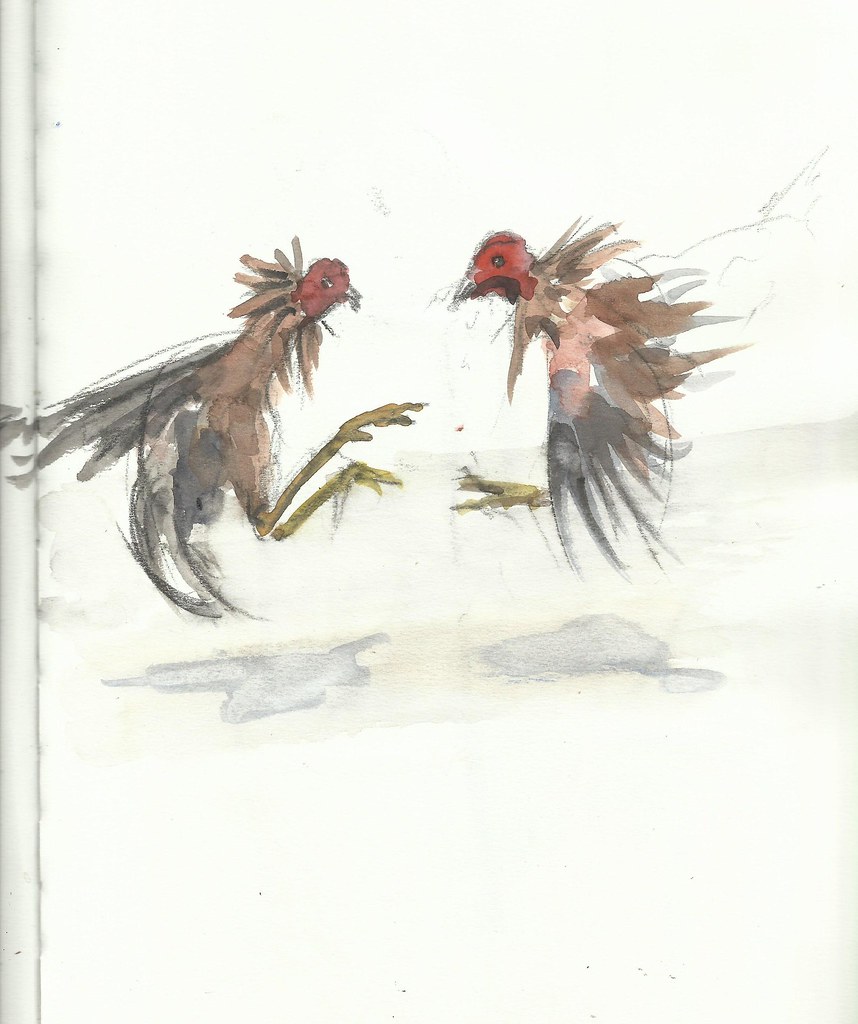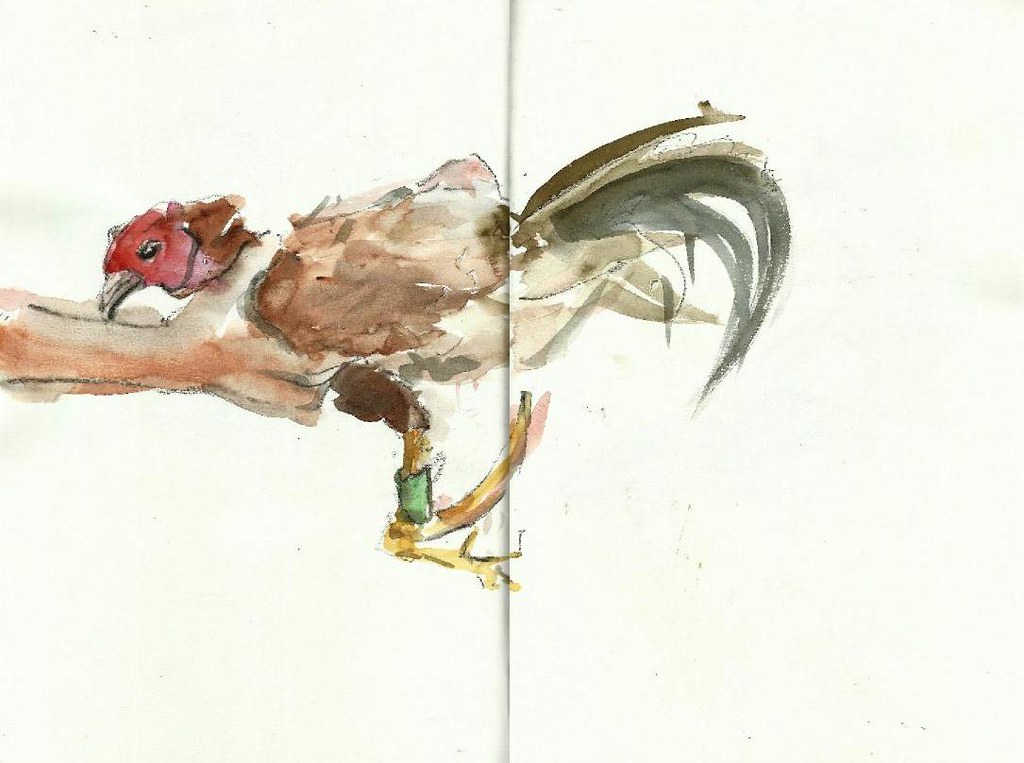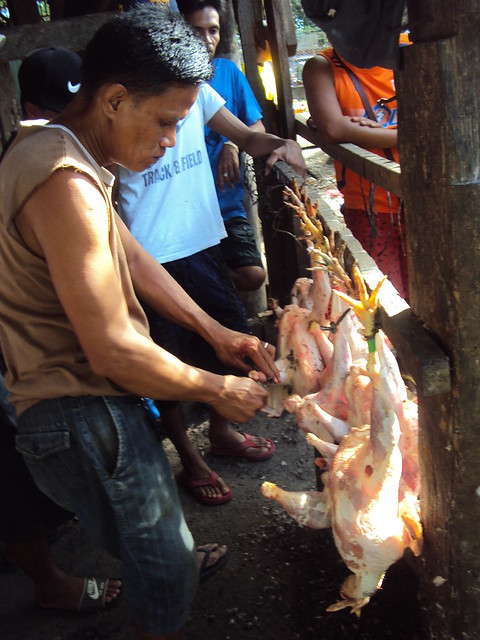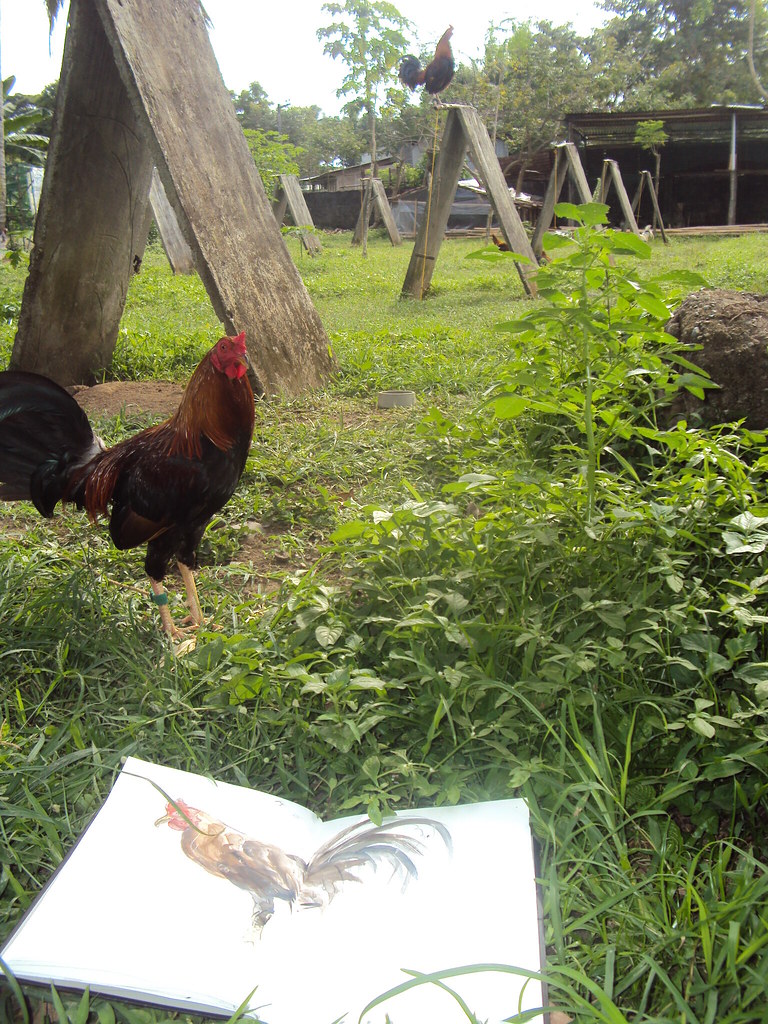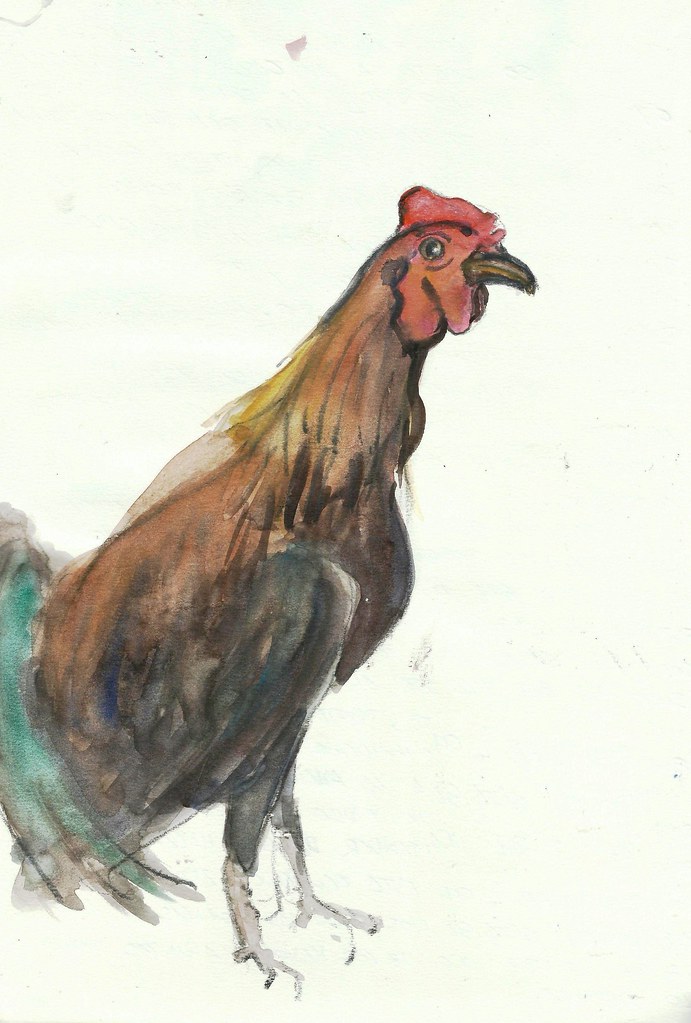During my stay in the Philippines I didn´t miss
the opportunity that I found to portray and report about cockfights.
Cockfighting or Sabong is undoubtedly
one of the most atavistic and rooted traditions in the Philippines.
Performing
the report among the crowds in the cockfight was a challenge for me. When I
began to draw on my notebook I felt the unusual and embarrassing situation,
more for the host who accompanied me. Fortunately, however, the initial shame did not overwhelm my desire to draw and finally I think
that I became part of the spectacle that afternoon in the cockpit arena.
Filipinos love to bet. When we arrived at the coliseum, the fights had not started however there was a group of men playing “sa pula sa puti” around a board, betting the color of the box on which the ball would be placed. This was the first sketch of the afternoon.
After this, I was allowed to go into the room
for fight preparation. The Manari,
often a trusted person of the owner, determines the fitting length and form of
the steel spores. He should have at least eight knives. If he does not attach
the spores, this is the task of the Heeler (blade fixer). This task must be
carried out very careful and it is crucial for the fight.
Before the combat, the cocks´ fighting spirit
gets stimulated by bringing them together, so that they go in feint attacks.
This gives an impression to the audience, which cock will be the favourite.
Later the referee takes off the leather wrappers, examines the knives and wipes
them again with alcohol in order to exclude the use of laming poisons. If he
gets the impression that the bet businesses are finished, he gives the sign for
the beginning of fight.
The wounds of the victorious cock are sutured up behind the bleacher, if there is a chance of convalescence and the owner gets the bet shares of the central bet. From this sum, he still has to pay the handler, the blade fixer, the organizer as well as other bet participants.
The Cock doctor was delighted with my sketch and took some pictures of my works.
The losing cock, dead and inferior, is mostly handed over to the winner as a trophy for consumption.
To the
report, I add the sketches that I took a few days before in a breeding ground
for fighting cocks.
Durante mi estancia en Filipinas no desaproveché la oportunidad
que se me brindó para conocer y retratar las peleas de gallos. Estas son sin
duda una de las tradiciones más atávicas y arraigadas en Filipinas. Realizar el
reportaje entre la multitud en el reñidero de gallos fue todo un desafío para
mí. Cuando comencé a dibujar sobre mi cuaderno sentí lo inusual y embarazoso de
la situación, más para el anfitrión que me acompañaba. Sin embargo,
afortunadamente, el pudor inicial no se impuso a mis ganas de dibujar y
finalmente creo que esa tarde en la pelea yo fui parte del espectáculo.
A los filipinos les encanta apostar. Cuando llegamos al
coliseo, las peleas no habían comenzado, sin embargo había un grupo
de hombres en torno a un tablero apostando el color de la casilla sobre
la que se posaría la pelota. Este fue el primer apunte de la tarde.
Tras esto, me dejaron pasar a la sala donde les fijan las
cuchillas a los gallos. El Manari, a menudo una persona de confianza del
propietario, determina la longitud apropiada y la forma de las cuchillas de
acero. Debería tener al menos ocho cuchillos. Si no se adhieren las esporas,
esta es la tarea del Heeler (fijador de cuchilla). Esta tarea debe llevarse a
cabo con mucho cuidado y es crucial para la lucha.
Antes del combate el espíritu combativo de los gallos se estimula encarándolos. Esto da una impresión a la
audiencia de cual gallo es el favorito. Más tarde el árbitro quita las
envolturas de cuero, examina los cuchillos y los limpia de nuevo con alcohol
para excluir el uso de venenos. Cuando tiene la impresión de que las apuestas
están hechas, da la señal para el
comienzo de la pelea. La peleas no suelen durar más de un par de minutos.
El propietario recibe las acciones de apuesta de la apuesta
central. A partir de esta suma que todavía tiene que pagar al manejador, al
fijador de la hoja, al organizador, así como a otros participantes de la
apuesta. El gallo perdedor, muerto y desplumado, es entregado al ganador para
el consumo.Tras el combate, el "Cock doctor" , tras las gradas, tratará de suturar las heridas de los gallos vencedores. El veterinario de esa tarde quedó encantado con mis dibujos y me pidió posar con él.
Al reportaje quiero añadir los apuntes que hice unos días
antes en un criadero de gallos de pelea.



